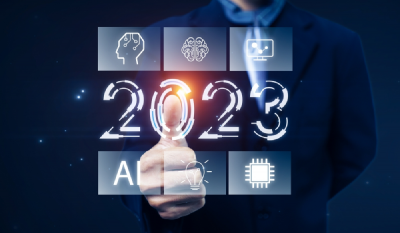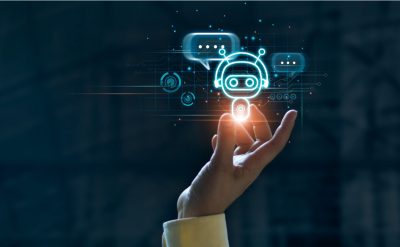Artificial Intelligence (AI) is not just a technology that’s been used by the autonomous manufacturing industry to solve complicated manufacturing problems; today it’s being used for various problems and solving the issues of common users. Artificial Intelligence (AI) is all set to solve complex user problems in 2019 and the biggest challenge for the AI would be to make the total setup scalable. Recently AI applications became a prominent part of the healthcare sector, wherein the patients were able to view their health without going to any doctor or the facility. It is an extension of telemedicine but in using the AI, the doctor can predict the future health problems patients might face based upon their health-behavior. AI systems will be able to reduce the cost due to human errors and reduce patient mortality drastically preventing contiguous diseases. Non-Governmental Organizations are also planning to implement an AI application in developing economies to predict epidemic breakouts to prevent them or for better preparation. Most of the AI applications are being used to disrupt the developing economies solving the last mile problems.
For enterprises, AI can improve total resource utilization and also keep a tap on the security infrastructure. Enterprises are currently utilizing the AI to predict security flaws in the infrastructure and even prevent malware attacks, with cloud providers AWS and IBM leading the race. Data challenges are becoming more relentless, and the attacks are becoming more spotted on the enterprise data. AI will reduce the requirement of having a specialized resource for securing your infrastructure network and data.
Combination of Cloud Computing, AI and Data
AI is a technology that defines the data, the data can be from any source but AI helps it to predict and solve different problems. AI acts similar to the human mind that can learn and predict future outcomes with minimum interference from the other sources. Innovation in technology has been surrounded by the vision that teaches machines to see, process and react the way humans do. So dividing AI into a group of technologies that can effectively process information.
1. Computer Vision: It’s the ability of the computers to recognize different objects and relationships in a picture or video.
2. Speech Synthesis and Recognition: Its ability for the computer to listen to different types of human voices and recognize the different words used. Speech recognition has seen a dramatic development over the years and cored most of the human languages on earth.
3. Response: The ability of a computer to react for a given state without human interference will be the response of the machine. Though most machines today can answer a certain type of questions depending upon the knowledge covered and the agility of the processor.
The next major challenge for the developers is integrating all the above three stages to form a single working entity. For the enterprises, they have to unlock certain capabilities depending on the data requirements. The AI applications can be used to unlock the power of data collected over time and inside massive data sets using algorithms. The AI-powered systems create and understand all the unstructured data such as emails, chats and handwritten notes that can be used as a model to learn. Creating an impactful persona and understanding the different channels that can create meaningful results for the enterprises. Cloud computing is yet another digital transformation that will help in channelizing the Artificial Intelligence Applications. Processing different types of data from remotely located physical data centers will increase the cost of the data processor and also storage facility. Using cloud computing a stream of data from different points for effective integration and analysis. Cloud along with flexible storage options it also offers infrastructure services to deal with requirements. Data, Artificial Intelligence (AI) and Cloud all need to be woven synchronously to offer the enterprises the solutions that provide enterprise-grade security, availability, compliance, and management.
Programming Languages That Can Be Used To Develop Artificial Intelligence (Ai) Applications
1. Python
Python is considered the foremost AI application language due to ease of usage. The ease in understanding the syntax and effective implementation makes python a choice for developers. Python takes a shorter development path compared to the languages such as Java, C++ or Ruby. Different types of libraries are available in the language that supports object-oriented functions and procedure-oriented programming.
2. R
R language is one of the most effective languages for the statistical model building environment. Analyzing and manipulating different types of data to make an understandable model that can be derived from the data. R contains numerous packages that can be used to analyze different fields in machine learning RODBC, Gmodels, Class, and Tm.
3. Lisp
Lisp is one of the oldest machine learning languages that is still been used currently. It’s been known for the prototyping capabilities and dynamic creation of new objects. It also has the capability of processing symbolic information effectively. One of the unique capabilities of the Lisp is an interactive evaluation of the expression and recombination of different functions while the program is still running.
4. Prolog
Prolog is most effectively used for pattern matching, tree-based structuring, and automated backtracking. Prolog is known for its powerful processing language, flexible programming making it one of the foremost language for AI system designing.
5. Java
AI has a lot to provide when it comes to dealing with search algorithms and genetic programming. Java language is considered a background to effectively create the interface for the AI applications making the graphics and interface simple. Java can be used to effectively implement algorithms for the search and genetic modeling reducing the complexity.
AI applications will require a combination of languages dealing with various overviews and different challenges that need to be solved. Developers need to approach different problems with a combination of tools that can reduce the overburden and autonomy of the language.
To know more about recent AI developments, you can download our whitepapers.














